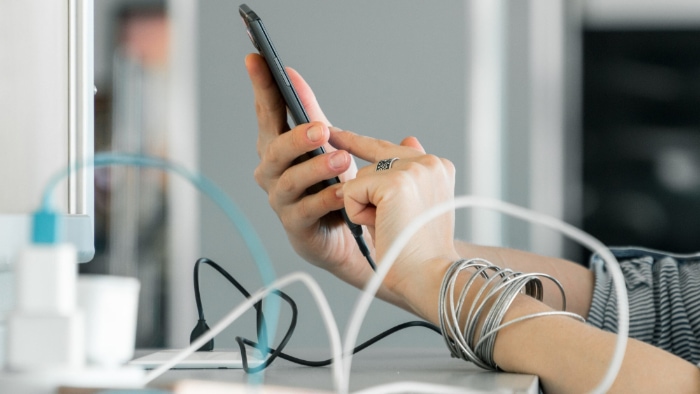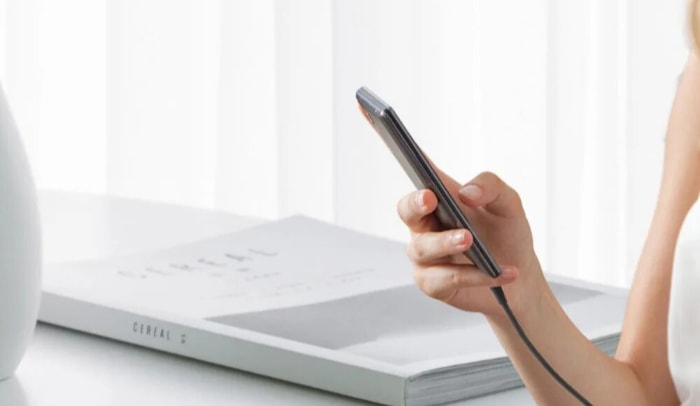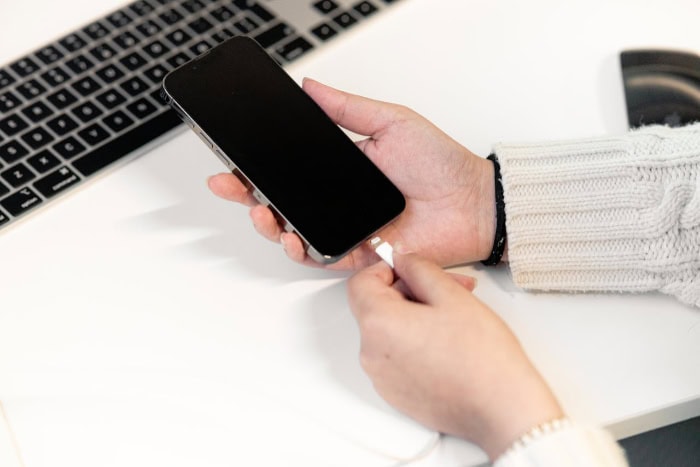Is It Bad to Use Your Phone While Charging? Myth vs. Reality

Your phone’s battery is dying, but you have an important email to send. You plug it in and keep typing, wondering if this convenient habit is silently ruining your battery.
It's a common dilemma, surrounded by conflicting advice and old myths. Some say it's perfectly fine, while others warn of overheating and sustained damage.
The truth is more nuanced than a simple yes or no. The actual concerns are not about your phone exploding, but about the subtle effects of heat and charging cycles on your battery's health.
Foundational Safety Principles
Concerns about using a phone while it charges are common, often fueled by dramatic stories and outdated warnings. In reality, modern smartphones are built with sophisticated safeguards.
The most significant risks do not come from the act of using the phone itself, but from the quality of the charging accessories and a few persistent myths that cause unnecessary worry.
Official Manufacturer Stance
Phone manufacturers design their devices with the expectation that you will use them while they are plugged in. It is considered a normal and safe operation.
When a phone is charging and in use, its power management system intelligently allocates electricity. Power from the charger is directed to both run the phone's active processes and charge the battery simultaneously. This is why you might notice that your phone charges more slowly when you are using it for intensive tasks.
The Importance of Certified Equipment
The single most critical factor for safe charging is the quality of your accessories. Always prioritize using the charger and cable that came with your phone or certified third-party alternatives.
Certifications indicate that the accessory meets specific safety and performance standards, which protects your device from electrical faults, short circuits, and excessive heat. Using cheap, uncertified chargers or frayed cables introduces genuine risks, as they often lack the internal safety mechanisms that prevent power surges and overheating.
Debunking Common Charging Myths
Fears of electrocution or a battery “overcharging” are largely unfounded with modern smartphones and certified equipment. Your phone contains a charge controller that automatically cuts off power to the battery once it reaches 100%, making it impossible to overcharge.
Incidents involving electrical shocks are exceptionally rare and almost exclusively linked to the use of faulty, counterfeit, or water-damaged charging hardware, not the phone itself. As long as your accessories are in good condition and certified for use, these dramatic fears can be set aside.
Fundamentals of Battery Health

A smartphone battery is a consumable component; its ability to hold a charge naturally diminishes over time. While this degradation is inevitable, your habits can significantly influence how quickly it happens.
The primary factors that accelerate battery aging are exposure to high temperatures and spending prolonged periods at a very high or very low charge. Modern phones include software designed to manage these issues, but conscious user habits remain the most effective way to preserve battery performance.
The Damaging Effects of Heat
Heat is the number one enemy of a lithium-ion battery. Elevated temperatures speed up the chemical reactions inside the battery that cause its capacity to permanently decrease.
Both charging the battery and using the phone for demanding tasks generate heat. When you do both at the same time, the combined thermal load can push the battery's temperature into a range that accelerates its decline.
This is why a phone can feel noticeably warm when you play a game while it is plugged in. Minimizing heat is therefore the most important step you can take to protect your battery.
Managing the State of Charge
The charge level of your battery also affects its health. Keeping a battery constantly at 100% places its internal components under a higher level of stress, which contributes to faster aging.
Conversely, letting it frequently drop to 0% can also be damaging. For optimal battery health, operating within a middle range, for example between 20% and 80%, is much gentler.
While it is not always practical to micromanage your charging levels, avoiding the extremes when possible can make a noticeable difference over the life of your device.
Leveraging Smart Charging Features
To help manage the stress of full charges, most modern smartphones include optimized or adaptive charging features. This software learns your daily routine, particularly if you charge your phone overnight.
Instead of rapidly charging to 100% and staying there for hours, the feature will charge the battery to around 80% and then pause. It intelligently resumes charging later so that the phone only reaches 100% just before you typically wake up and unplug it.
Activating this feature is a simple, automated way to reduce the time your battery spends at its most stressed state.
Charging Performance and Thermal Management
The speed at which your phone charges is not constant; it dynamically changes based on what you are doing and the device's temperature. Your phone's internal systems constantly work to find a balance between delivering power quickly, keeping the battery cool, and running your apps smoothly.
Using your phone while it is plugged in directly influences this balancing act, often resulting in slower charging speeds and increased heat.
How Usage Affects Charging Speed
When your phone is plugged in, it operates on a shared power budget. The charger supplies a finite amount of electrical current, and the phone must allocate it between two primary tasks: powering the system's immediate needs (like the screen, processor, and radios) and recharging the battery.
If you are actively using your phone, especially for demanding activities, a larger portion of the incoming power is diverted to run those operations. As a result, less power is available to send to the battery, and the charging process proceeds more slowly than it would if the phone were idle.
The Tradeoff with Fast Charging
Fast charging technology offers great convenience, but it comes at the cost of generating more heat. Pushing a high amount of power into the battery in a short period is less efficient and inherently raises its temperature.
Your phone is designed to protect its battery from thermal damage. If its internal sensors detect that the temperature is rising too high, the charging system will automatically reduce the charging speed, or “throttle,” until the battery cools to a safer level.
This is a built-in protective measure, not a flaw, and it is more likely to occur if you are using the phone for intensive tasks while fast charging.
Wired vs. Wireless Charging Thermals
The method you use to charge also impacts heat generation. Wireless charging, while convenient, is less efficient than charging with a cable.
During the process of transferring energy wirelessly from the pad to the phone, a significant amount of energy is lost as waste heat. This makes wireless charging a warmer process by default.
If you use your phone for more than simple tasks while it is on a wireless charger, you are compounding the heat from the processor with the heat from the inefficient charging, creating a scenario that can quickly lead to high temperatures and throttled performance.
Best Practices for Plugged-In Use

Since using your phone while charging introduces variables like heat and physical strain, adopting a few conscious habits can significantly reduce potential harm. These practices are not about drastic changes but rather small adjustments that protect both your battery and the physical hardware of your device.
Maintain Proper Ventilation
A phone's case is designed to dissipate the heat generated by its internal components. To help it do its job, always place your charging phone on a hard, flat surface like a table or desk.
This allows air to circulate around the device, carrying heat away. Avoid charging it on your bed, a sofa, or under pillows. Soft, insulating surfaces like blankets trap heat, preventing it from escaping and creating a pocket of high temperature that can be very damaging to the battery.
Stick to Lighter Tasks
Not all phone usage is equal when it comes to generating heat. If you need to use your phone while it is charging, try to stick to less demanding activities.
Sending messages, browsing the web, or reading an article are considered light tasks that produce minimal heat. On the other hand, processor-intensive activities like playing graphics-heavy games, editing video, or streaming high-resolution content will cause the processor to heat up significantly.
This stacks on top of the heat already being generated by charging, creating a worst-case scenario for your battery's health.
Handle Your Hardware with Care
The charging port and cable connector are points of frequent physical stress. Using your phone while it is tethered to a wall can cause you to accidentally tug, bend, or put pressure on the connection point.
Over time, this can lead to a loose or damaged charging port, which is often a difficult and expensive repair. To minimize this risk, consider using a longer, high-quality certified cable.
A longer cord provides more slack, reducing the tension on the port as you move and handle the phone.
Habits for Long-Term Battery Health
While individual charging sessions have a small impact, your consistent, long-term habits are what truly determine the lifespan of your battery. By integrating a few simple strategies into your daily routine, you can actively slow down the battery's natural aging process.
These habits focus on minimizing the two biggest culprits of battery degradation: excessive heat and prolonged time spent at high charge levels.
Adopt a Partial Charging Routine
Lithium-ion batteries are most comfortable when operating in the middle of their charge capacity. Routinely charging your phone to 100% and letting it drop to near 0% puts more strain on the battery than performing smaller, partial charges.
A widely recommended practice is to keep your battery level between approximately 20% and 80%. You do not need to be obsessive about hitting these numbers exactly, but thinking of 80% as “full enough” for daily use can make a meaningful difference over time.
Topping up your phone during the day is often better for its health than waiting for a full recharge from empty.
Optimize Your Overnight Charging
Leaving a phone plugged in all night used to be a major source of battery stress, as it would sit at 100% charge for hours. Modern smartphones have an intelligent solution for this problem called Optimized or Adaptive Charging.
When you enable this feature in your phone's settings, it analyzes your charging patterns and daily schedule. The phone will charge quickly to about 80% and then pause, only resuming to complete the final 20% just before you typically unplug it in the morning.
Using this feature is one of the easiest and most effective ways to protect your battery during overnight charges.
Pay Attention to Temperature
Your phone provides clear physical feedback when it is under thermal stress. One of the most important habits you can develop is to simply pay attention to how your device feels.
If your phone or the charging brick becomes uncomfortably hot to the touch, it is a warning sign that conditions are not ideal. In this situation, the best course of action is to unplug the phone immediately.
Let both the phone and the charger cool down before attempting to charge again. Trusting your sense of touch is a simple yet powerful way to intervene before excessive heat can cause lasting damage.
Knowing When to Use and When to Wait
Using your phone while charging is not an all-or-nothing proposition; the decision depends on the situation. It comes down to exercising good judgment and being aware of what you are asking your phone to do.
Light use is almost always acceptable, while certain activities and warning signs should prompt you to unplug and give your device a break.
Scenarios for Safe Use
For the most part, performing light tasks on your phone while it charges is perfectly fine. Activities like sending text messages, checking emails, scrolling through social media, or reading an article generate very little heat.
In these situations, the processor is not under heavy load, so the combined heat from the activity and the charging process is unlikely to raise the battery's temperature to a harmful level. The practice becomes even safer when you are using certified, high-quality accessories and have the phone resting on a surface that allows for good air circulation.
Warning Signs That Demand a Pause
Your phone will give you clear signals when it is under too much thermal stress. The most obvious indicator is the device feeling noticeably or uncomfortably hot to the touch.
Another major warning sign is a sudden drop in performance. You might notice that apps become laggy, animations stutter, or the screen automatically dims.
Some phones may even display an on-screen warning that the temperature is too high and that certain functions will be limited until it cools down. If you experience any of these signs, you should immediately stop what you are doing, unplug the phone, and let it return to a normal temperature.
Matching Your Charger to Your Activity
You can be strategic about how you charge based on what you plan to do. If you know you will be using your phone for an extended period while it is plugged in, such as for a long video call, consider using a standard, slower charger instead of a fast charger.
Slower charging generates less heat, leaving more thermal headroom for the phone's processor. The most stressful combination for a battery is fast charging paired with a demanding workload like gaming.
Avoiding this specific scenario is a proactive way to prevent the phone from overheating in the first place.
Conclusion
Ultimately, the fear of using your phone while it charges is largely a relic of the past. Modern smartphones are designed to handle simultaneous use and charging safely, so you do not need to stop everything just to power up.
The practice is less a question of “if” you should do it and more a matter of “how.” The most significant threat to your battery is not the act of using it while plugged in, but the excess heat that the combination can generate.
By taking a few simple precautions, you can easily mitigate this risk. Sticking to light tasks, ensuring your phone has room to breathe on a hard surface, and using certified charging gear are fundamental steps.
Furthermore, enabling your phone's optimized charging feature and trying to avoid leaving it at 100% for extended periods will collectively preserve your battery's health, ensuring it serves you well for as long as possible.


